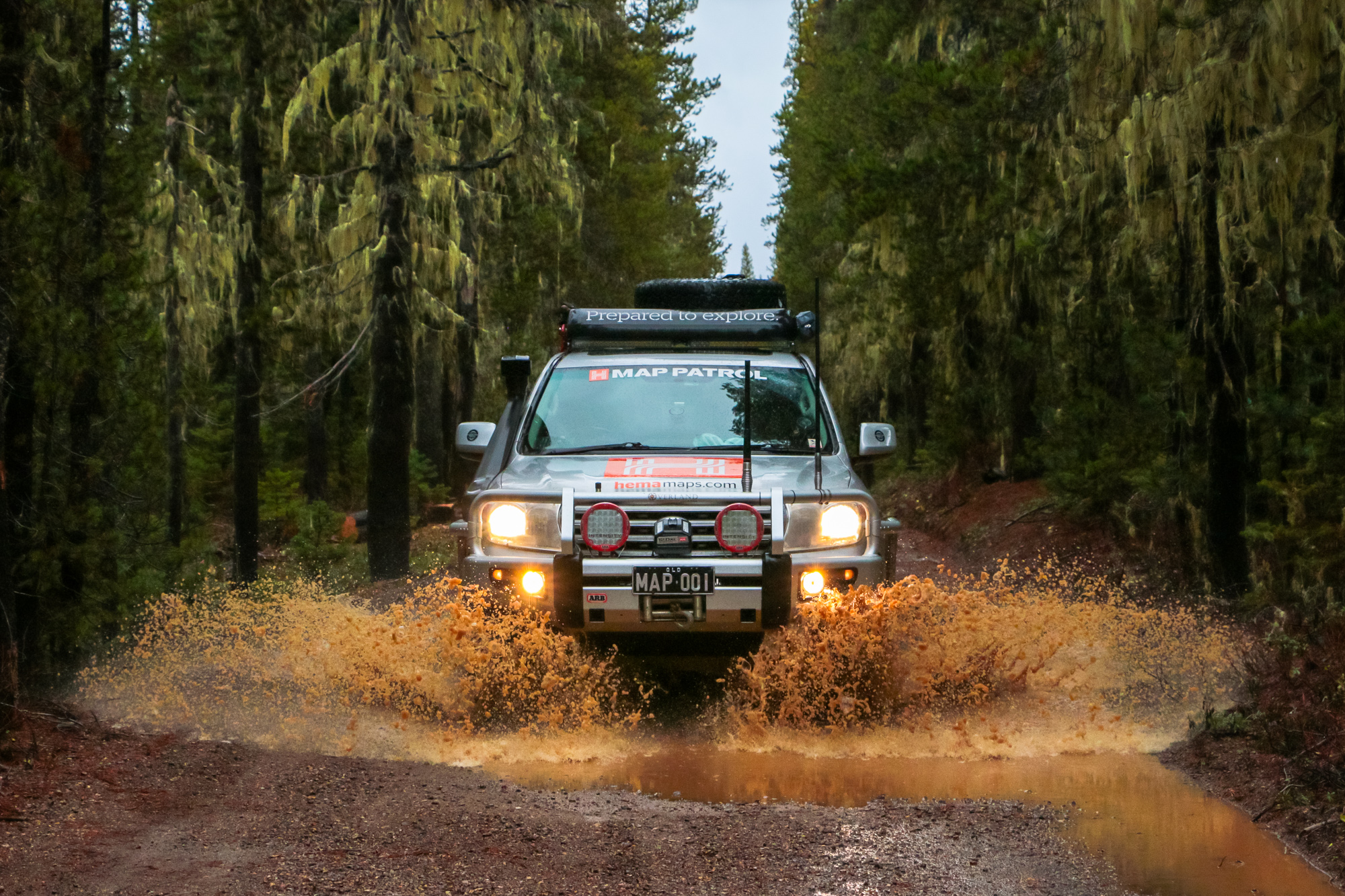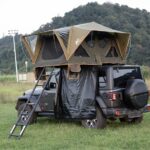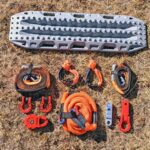Overlanding in the USA has become a hallmark of adventure travel, blending off-road exploration with self-sufficient road trips. For enthusiasts, the appeal of traversing diverse landscapes, from rugged mountains to vast deserts, is undeniable. Selecting the right overlanding routes USA is essential for maximizing safety, scenic experiences, and overall enjoyment. This comprehensive guide will cover the best trails, planning strategies, and practical tips to ensure a memorable overland journey across the United States.
Introduction to Overlanding in the USA
Overlanding is more than just driving; it is an immersive experience combining travel, adventure, and outdoor living. Unlike conventional road trips, overlanding emphasizes self-reliance, off-road navigation, and extended journeys into remote areas. The United States, with its vast and varied terrain, offers countless opportunities for overlanders, from desert trails in the Southwest to forested mountain routes in the Pacific Northwest.
Choosing the right overlanding routes USA is crucial for several reasons: it ensures safety, optimizes scenic value, and allows for effective trip planning. This guide will explore the top trails across different regions, provide practical tips for preparation, and highlight essential gear and etiquette for overland travel.
Benefits of Planning Overlanding Routes
Safety and Preparation
Planning your overland route is a critical step in ensuring safe travel. Overland trips often venture into remote areas where medical assistance and fuel stations are limited. Proper route selection allows adventurers to anticipate road conditions, potential hazards, and required permits.
By preparing ahead, overlanders can avoid dangerous areas, unexpected closures, or challenging terrain that may exceed their vehicle’s capabilities. This level of preparation is essential for both novice and experienced drivers.
Maximizing Scenic Experiences
One of the greatest advantages of carefully planned routes is the ability to experience scenic overland trails at their fullest. From breathtaking vistas to hidden natural landmarks, selecting the right trails ensures that each stop enhances the journey. Scenic trails often include national parks, river crossings, and panoramic overlooks, providing countless photo opportunities and immersive outdoor experiences.
Efficient Overland Trip Planning
Route planning also allows for efficient use of time and resources. Optimized overland trips reduce unnecessary backtracking and minimize fuel consumption. Proper planning ensures that travelers can allocate sufficient time for camping, exploration, and rest, making the journey both enjoyable and sustainable.
Top Overlanding Routes in the USA
The USA offers a diverse range of overlanding routes catering to different skill levels, vehicles, and adventure preferences. Below is a detailed overview of the most noteworthy regions.
Western USA Trails
The Western United States is a haven for overlanders, combining desert expanses, mountain ranges, and iconic landmarks.
- Moab, Utah: Known for its red rock formations and off-road trails, Moab is ideal for 4×4 vehicles. Popular trails include Hell’s Revenge and the Fins & Things Trail.
- Colorado Backcountry: Offers alpine scenery, river crossings, and rugged dirt roads. Recommended for advanced overlanders due to elevation and challenging terrain.
- California Coastal Routes: Combines scenic Pacific views with forested inland roads, perfect for moderate overlanders seeking a blend of beach and mountain landscapes.
Best Season: Spring and fall for mild temperatures and dry roads.
Southwestern Overland Routes
The Southwest is synonymous with deserts, canyons, and expansive trails.
- Arizona Desert Trails: The Arizona Strip and Sedona backroads offer challenging desert terrain, including sand dunes and rocky outcrops.
- New Mexico: Remote trails in the Gila Wilderness provide solitude, river crossings, and historical landmarks.
- Canyonlands: Offers both off-road trails and scenic viewpoints for photography enthusiasts.
Recommended Vehicles: 4×4 SUVs or trucks with high clearance.
Northern and Pacific Northwest Trails
This region features dense forests, mountainous terrain, and pristine rivers.
- Oregon and Washington: The Cascades provide forested trails, volcanic landscapes, and rivers suitable for intermediate overlanders.
- Montana: Offers wide-open spaces, mountainous roads, and wildlife encounters. Overlanders should be prepared for variable weather and remote conditions.
Eastern Overlanding Routes
While less rugged than the West, the Eastern USA has scenic trails that combine forested roads, mountains, and historical landmarks.
- Blue Ridge Parkway: A 469-mile scenic drive through the Appalachian Mountains, offering overlooks, hiking opportunities, and historic sites.
- Smoky Mountains: Features forested off-road trails suitable for moderate overlanding.
- Appalachian Backcountry: Remote trails and rivers provide adventurous routes for those seeking solitude and natural beauty.
Cross-Country Overlanding Routes
For the ultimate overlanding adventure, cross-country routes span multiple states and ecosystems, allowing travelers to experience the diversity of the USA.
- Trans-America Trail: Extends from the East Coast to the West, offering thousands of miles of scenic and challenging terrain.
- Western States to Eastern Plains: Combines mountain passes, desert expanses, and plains, ideal for long-term overlanders.
- Top US Overland Destinations: Include Moab, Colorado Rockies, Cascades, Blue Ridge Parkway, and the deserts of Arizona and New Mexico.
Planning cross-country routes requires careful attention to fuel stops, camping options, and vehicle readiness to ensure a smooth journey.
Tips for Planning Your Overland Trip USA
Vehicle and Gear Preparation
Choosing the right vehicle is fundamental. Off-road SUVs, trucks, or 4×4 vehicles are ideal for most overlanding trails. Essential gear includes:
- Recovery equipment (winch, tow straps)
- Navigation tools (GPS, maps, trail apps)
- Camping equipment (tents, sleeping bags, rooftop tents)
- Food, water, and first aid supplies
Internal Link: For more information on suitable vehicles, refer to our guide on Best Overlanding Vehicles: Top 4x4s, SUVs & Trucks for Adventure.
Route Mapping and Navigation
- Use GPS navigation combined with offline maps for remote areas.
- Apps such as Gaia GPS or AllTrails provide trail-specific data and user reviews.
- Always carry paper maps as a backup.
Budgeting and Accommodation Options
- Plan for fuel, food, permits, and campsite fees.
- Decide between ground camping, rooftop tents, or established campgrounds.
- Keep contingency funds for emergencies or vehicle maintenance.
Essential Overlanding Etiquette and Safety Tips
Overlanding responsibly is key to preserving trails and ensuring personal safety:
- Leave No Trace: Pack out all trash and minimize environmental impact.
- Wildlife Safety: Maintain distance from animals and store food securely.
- Trail Etiquette: Yield to uphill traffic, stay on designated roads, and respect local regulations.
Recommended Scenic Overland Trails
| Route Name | Location | Length | Difficulty | Highlights |
|---|---|---|---|---|
| Moab Off-Road Trails | Utah | 50–100 miles | Advanced | Red rock formations, Hell’s Revenge |
| Trans-America Trail | East–West USA | 3,700 miles | Moderate–Advanced | Multi-state scenery, rivers, mountains |
| Blue Ridge Parkway | Virginia–North Carolina | 469 miles | Easy–Moderate | Scenic overlooks, hiking trails |
| Colorado Backcountry | Colorado | 100–200 miles | Advanced | Alpine scenery, river crossings |
| Arizona Desert Trails | Arizona | 50–150 miles | Moderate–Advanced | Sand dunes, canyons, remote camping |
These trails encompass a mix of terrain types, scenic highlights, and adventure levels for all types of overlanders.
Frequently Asked Questions (FAQ)
Q1: What are the best overlanding routes USA for beginners?
A: Beginners should consider easier trails like the Blue Ridge Parkway, California coastal routes, or selected sections of the Trans-America Trail.
Q2: How do I plan a cross-country overland route?
A: Start by mapping key destinations, check road conditions, prepare your vehicle, budget for fuel and supplies, and plan camping or lodging stops along the way.
Q3: Which vehicles are best for overlanding in the USA?
A: Reliable 4×4 SUVs, trucks, and off-road-capable vehicles are recommended. For detailed options, see our Best Overlanding Vehicles guide.
Q4: Are there permits required for overland trails?
A: Some trails, particularly in national parks or wilderness areas, require permits. Always check local regulations before departure.
Conclusion & Call-to-Action
Overlanding routes USA offer unparalleled adventure opportunities for enthusiasts seeking scenic trails, challenging terrain, and self-sufficient exploration. From the deserts of the Southwest to the mountains of the Pacific Northwest, the United States provides a diverse landscape for unforgettable journeys.
By carefully planning routes, preparing your vehicle and gear, and following responsible overlanding practices, travelers can enjoy a safe and rewarding experience.
For expert guidance, detailed vehicle recommendations, and additional trip planning resources, consult Just Overland and prepare for your next great American overland adventure.








